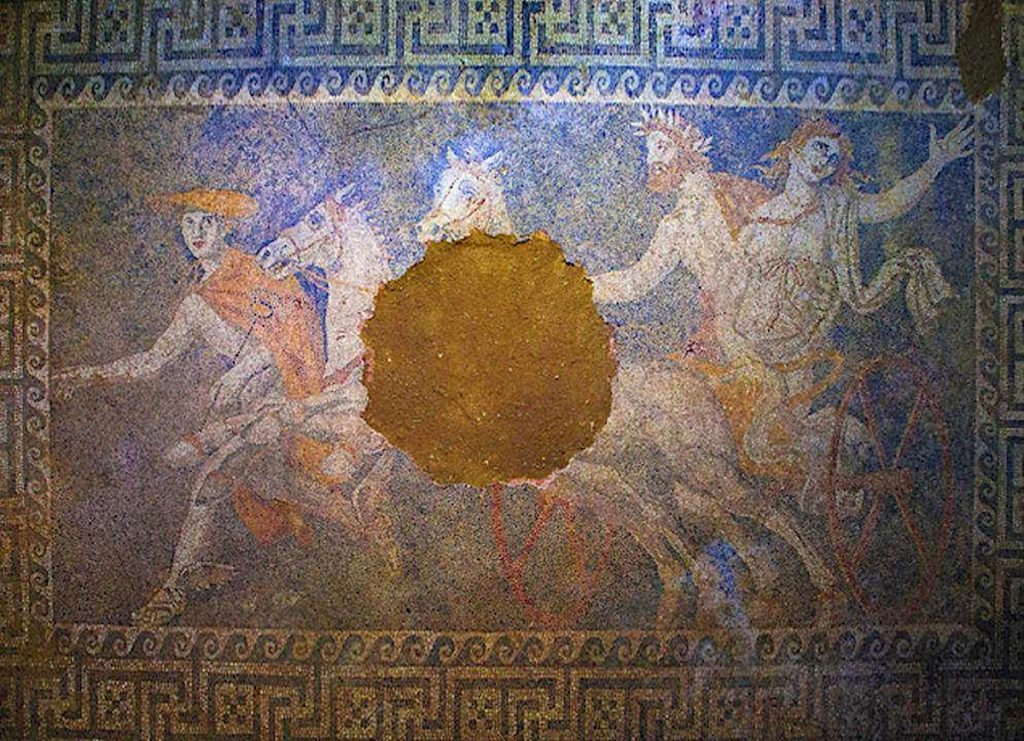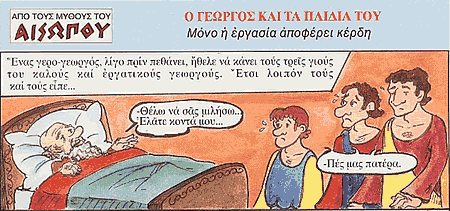“Where flix and wild mint grew
and the land was sprouting its first cyclamen
now peasants bargain for cement
and birds fall dead in the blast furnace.
Sleep Persephone
in the bosom of the earth
on the balcony of the world
never come out again.
Where the mystics used to join hands
reverently before entering the altar
now the tourists throw cigarette butts
and the new pans to see the refinery.
Sleep, Persephone
in the bosom of the earth
on the world’s balcony
never come out again.
Where the sea was a blessing
and the plains were a blessing
and now furnaces carry empty bodies of iron children and scrap metal to the shipyards
.
Sleep, Persephone
in the bosom of the earth
on the balcony of the world
never come out again.”
Poet: Nikos Gatsos
Persephone was the daughter of the Greek goddess Demeter and the Greek god Zeus. Hades (also referred to as Pluto) fell in love with her and asked for her from Zeus.
The Rapture of Persephone
Hades kidnapped her, knowing that she would not choose a life of darkness. With him she gave birth to Zagreus, Eubulus and Sabasio. Pluto took her to the underworld for her beauty. But the goddess Demeter asked for her back. Hades agreed that Persephone should ascend six months in the upper world and descend the next six in the lower. So the months that Persephone is in the upper world, the Goddess Demeter was happy and there was good weather, while the other months there was bad weather.
The myth of the rapture first appears in Hesiod’s Theogony. The Homeric Hymn to Demeter is our most important source: it describes how the rapture occurred in the Nysian field, when the Maiden was gathering flowers in a meadow in the company of virgins, the Oceanid nymphs, Athena and Artemis. And while she was gathering a daffodil, the earth opened, Hades sprang up with his chariot and seized her. The cries for help were heard by none but Hecate and Helios. Jupiter was far away.
Natural theory of vegetation and the agricultural cycle
First formulated in antiquity by the Stoics. Koris is identified with cereals and her absence with their preservation underground. Her abduction is an allegory of the cycle of nature’s euphoria: the descent of the Maiden to the underworld every autumn is identified with the absence of the fruits, which spring up with her rise. Such a view, however, is considered to be rejected because, as our main source, the Homeric Hymn, tells us, the Maiden stayed four months in the Underworld and eight months in the Upper World. However, the cereals germinate only a few weeks after sowing.1 Also, the collection of flowers by the Daughter or the wanderings of Demeter in search of her daughter cannot be associated with agricultural activities
Theory of rebirth and eternity of life
It derives from generations springing from one another. This was the essence of the celebration of Persephone’s “ascension” in the Eleusinian Mysteries. Persephone’s return (ascension) was celebrated with the sowing of the autumn. Pluto symbolizes the wealth of wheat stored in underground silos or pithos during the summer months. Similar pithoi were used in the past for burials, and Pluto is identified with Hades, the lord of the underworld. During the summer months, the “Daughter” is in the grain of the underground silos, in the realm of Hades, and is identified with “Persephone”, the queen of the underworld. At the beginning of autumn, when the seeds of the old harvest are sown in the fields, “Koris” rises (ascension), and is reunited with her mother Demeter, for the old seed is united with the new shoot. For the initiates, this union was the symbol of the eternity of human life, springing from generations springing from one another.
The anthropological dimension of the myth
This focuses mainly on the human dimensions of the myth: marriage and death; which is dominant within the myth; the traumatic separation of the mother from the young daughter; grief and anger; and finally reconciliation. There is also the view that Hades should be considered “sterile, sexually weak, while Persephone represents the erotic adventures of adolescence”
The origins of the myth
The myth of the abduction of the goddess of vegetation is pre-Hellenic, as seen in the Sumerian and Syriac myth of the abduction of the goddess of fertility and vegetation Innana the Ishtar (Astarte). The place of the rapture is different in each local cult, and the location probably suggests that some magical far-off land was invented in the distant past. The Homeric Hymn mentions the plain of “Nysa”.
In Greek mythology, ‘Nysa’ is a mythical mountain with an unknown location, the birthplace of the god Dionysus. The earliest representation of a goddess that can be identified with Persephone coming out of the ground is a decorated plate from the Paleo-Palatinian period in Phaistos. The goddess has a vegetable-like form, accompanied by girls dancing among blossoming flowers.
The representation is similar to later representations of the “Rise of Pherefata”.
Persephone was an ancient chthonic deity of agricultural societies, who received the souls of the dead into the earth, but gained power for the fertility of the soil beneath which she reigned. Her companion was Pluto (Hades) who is identified with Pluto because as a chthonic deity he reigned in the earth where underground silos stored the seeds of wheat, but also contained the seeds necessary for a good harvest.
In some representations Hades appears with his horses. The myth of the “Daughter’s Rapture” comes from the idea that Hades snatches the souls of the dead as his prey, and then carries them to his kingdom. The idea appears vaguely in Homer, but is strong in Greek folklore. Charonas appears on his horse, and carries the dead to the underworld.
Orphic hymn of Persephone
Persephone, daughter of the great Zeus, come blessed, monogenean goddess, and receive the bestowed sacred, precious husband of Pluto, consort, biordote, who possesses the gates of Hades in the bowels of the earth, Praxidice, heratoplokame, pure death of Deus, birthplace of the Eumenides, queen of the hypochondriacs, daughter conceived by Zeus to unmarried parents, mother of the hermetic polymorph Eubulus, companion of the Hours, eater, eater, aglaomer, modest, omnipotent, daughter of the fruitfulness, the fruitfulness, the waxwork, the only desirable to mortals, the spring, the joy of the winter’s breath, who reveals the sacred bundle of grassy shoots, wedded to autumnal rapture, alone life and death to the multitudinous stinkers, Persephone. For thou savest always and killest all things. Hear, blessed goddess, bearing fruit from the earth, thou thundering peace and balmy health and euphoric life, pleasant old age that shall lead us to thy own place, Anassa, and to the beneficent Pluto.
“Persephone, daughter of great Zeus, elthé, makaira, muneogeneia goddess, kekharimen d᾽ sacra acceptai, Pluto’s precious tamer, kedeni, biordoti, the possessor of Aidao’s gates under cethea gaiis, Praxidice, heretoplokame, Demus death pure, Eumenides birthplace, hypochondriac kingdom, Zeus arretoysis parents teethed the queen, mother of the hermetic polymorphous Eubulus, Orion’s companion, eater, eater, aglaomorph, modest, omnipotent, daughter of fruitful moss, beneficent, cherubic, alone mortal, mortal, mortal, eternal, winter-joyful breathing, …holy, shedding bundles of blossoms and grasses… …rapture, and the bridegroom’s wife, life and death, life and death to me, mortal enemies, Persephone… …for thou art ever bringing and ever killing. thou, O goddess of the midsummer, bearest fruit from the earth, and from the earth, peace and peace, and health and joy, and life and fatness of the earth, to thee, anassa, and to thee, and to thee, Pluto, and to thee, and to thee, and to thee, and to thee, and to thee, and to thee, and to thee, and to thee, and to thee, and to thee, and to thee, and to thee, and to thee, and to thee, and to thee, and to thee.”
Sources:
https://el.wikipedia.org/wiki/Περσεφόνη
Tags: AGRICULTURAL PRODUCTION • GREEK MYTHOLOGY • MYTH • PERSEPHONE


